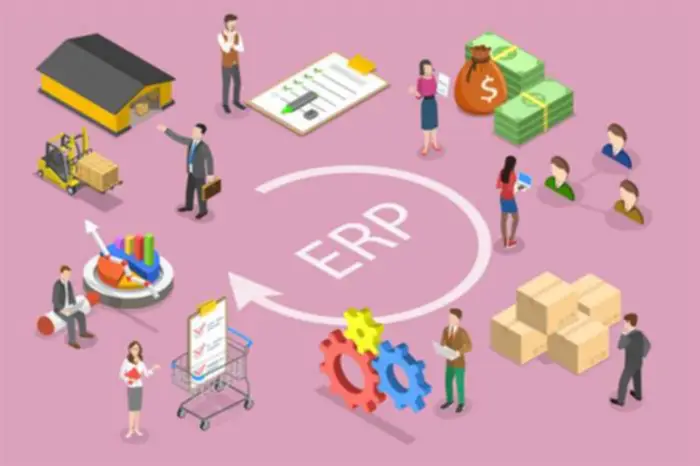An RTM lessens the stress by organizing and monitoring each to-do so you all the time know what duties you should full and when. Project planning software helps optimize assets, increase on-time supply, and obtain project targets successfully. Wrike supplies a safe collaborative workspace to prepare, test, and convey all of your initiatives Large Language Model in control along with your RTM.
What Are The Benefits Of A Requirements Traceability Matrix?
After designing the matrix, a review traceability matrix definition should be conducted with project stakeholders, group members, and the standard assurance team. The evaluation process covers all requirements and maps to the test instances. It also helps identify lacking requirements or duplicate entries.
Establish All The Project Necessities
You can use it to audit present artifacts (such as consumer stories or test cases) and verify whether or not they correlate along with your necessities or not. You can also use it to audit requirements to make sure there are no gaps in your code. Having an RTM in place will allow you to rapidly determine missing or incorrect requirements and close gaps in your project. This blog publish introduces you to the idea of requirement traceability matrix (also often recognized as RTM). It explains why utilizing an RTM is crucial to your success as a software developer, project manager, or QA engineer. Finally, it provides guidance on creating one on your group primarily based on real-life examples from a quantity of corporations which have successfully applied this follow.
Maintaining Rtm In Agile Tasks
In Helix ALM, you’ll find a way to create take a look at instances from requirements, test runs from take a look at instances, and issues from check runs. That instantly creates relationships — traceability — across your artifacts. But if you track requirements from those laws in a compliance matrix, it’s easier to understand what you need to develop and check. And that helps you monitor your checks and check leads to relation to those necessities. A necessities traceability matrix usually contains, at minimal, requirements, check instances, check results, and issues.
- This might take some time, relying on what number of requirements you might have.
- To perceive this higher, let us take an example of an e-commerce application for a makeup model.
- If you are in search of a stable foundation for establishing traceability in your RTM, you can tailor them to go well with unique project characteristics.
- Linking requirements to design parts aligns specified features with applied functionalities.
How Necessities Traceability Matrices Result In Polished Output
It helps the staff see, at a glance, how a selected requirement impacts totally different levels of the project. For example, a single requirement would possibly want a number of test circumstances or touch multiple elements of the design. Tools like wireframes assure that the visible construction aligns with the necessities, making validation and implementation smoother. On the flip aspect, backward traceability ensures that each deliverable ties back to a specific requirement.
Let’s take a detailed have a glance at some putting advantages of the Requirements Traceability Matrix apart from the obvious. Teams concerned can simply handle projects since they will all the time know the way far they’ve progressed. As a result, managing the scope of the requirements won’t be a challenge as groups can simply link requirements to tests and understand how they will meet varied necessities realistically. Requirement traceability is essential for tasks in a corporation.
It ensures that the testing process totally covers all the desired necessities. RTM offers a shared understanding of project necessities and their statuses. Thus, it is a centralized reference level and fosters better collaboration amongst stakeholders, builders, testers, and project managers. Additionally, the precise documentation of requirements improves communication, resulting in knowledgeable and efficient decision-making. You can easily use this matrix to replace relationships in your project, determine orphaned requirements, and ensure Test Coverage. This video shows you tips on how to create an Intersection RTM utilizing the work gadgets from your project.
All in all, a Traceability Matrix maps and traces customer requirements along with found defects and test circumstances. It ensures that no check case goes missed and provides full protection and testing of every software utility performance. You can also keep monitor of related tests and attributes as your staff identifies gaps which are missing features in your system. This step-by-step process helps determine the necessities and the products which might be required to be examined successfully. It additionally helps in figuring out the project’s course and timeline. A traceability matrix is a doc that particulars the technical requirements for a given check scenario and its current state.
Horizontal Matrices enable groups to simply identify issues utilizing a broader perspective. Watch how Helix ALM streamlines the creation of a traceability matrix. You’ll all the time have a current, complete ‘single pane of glass’ view of your requirements and check coverage.
Requirements traceability is the ability to track the relationships between project requirements, artifacts, and verification and validation testing all through the product growth course of. When QA will get the SRS/Sprint backlog document they first try to understand the necessities thoroughly and then begin writing check instances and reviewing them with the entire project staff. But typically it may happen that in these test cases, some functionality of requirements is lacking, so to keep away from it we required a requirement traceability matrix. For example, an RTM for a software growth team is predicted to incorporate heavy details about software program testing, points, bugs, and features to match product necessities to the sprint backlog.

Establishing traceability typically begins with creating a necessities traceability matrix. Requirements traceability is the ability to connect requirements to other artifacts — similar to several varieties of software program exams or bugs. It’s used to trace necessities — and prove that requirements have been fulfilled. Now that you realize what a traceability matrix is, create a copyable customized template that your staff can use again and again. Templates save time and act as a baseline to switch as you study extra about your workflows.

Ultimately, a well-maintained RTM ensures that all project necessities are met, contributing to profitable project outcomes and high stakeholder satisfaction. Requirements outline what must be tested, be sure that testing is comprehensive and centered on crucial areas, and provide a transparent measure of success for the software project. A requirement traceability matrix (RTM) is a document that tracks project requirements. Today, we will discover what an RTM is intimately and how to create such a document. A Requirement Traceability Matrix isn’t just a document but a strategic device that brings clarity, path, and quality to your software improvement projects. When you embrace the RTM with confidence, it transforms the complexity of project requirements right into a navigable and manageable journey.
Once you’ve got established your goals, you can decide which elements or artifacts to include within the matrix. What do you want the RTM doc to trace, and how much traceability are you aiming for (forward, backward, or bidirectional tracing)? Clearly defining your goals upfront will assist you to determine the suitable type of matrix and the information it ought to comprise. This might be LDS-001, which would offer extra granular element on the requirements that must be met for one aspect of the PCB format. The Intersection Matrix lets you easily replace the relationships between two work items by adding a relationship where they intersect. This sort of Matrix can be utilized to level out you your requirements hierarchy and how higher-level work items, like Epics, decompose down into lower-level requirements, like Test Cases and Bugs.
The software program additionally needs to uphold quality standards as a protection towards cyber-attacks for planes and electrical vehicles. Automotive traceability also ensures safety compliance since software and hardware are closely built-in and embedded. In the context of AI, a Traceability Matrix could be particularly useful. AI methods can be complex and multifaceted, with many various parts and requirements.
Transform Your Business With AI Software Development Solutions https://www.globalcloudteam.com/ — be successful, be the first!
Hits: 0

